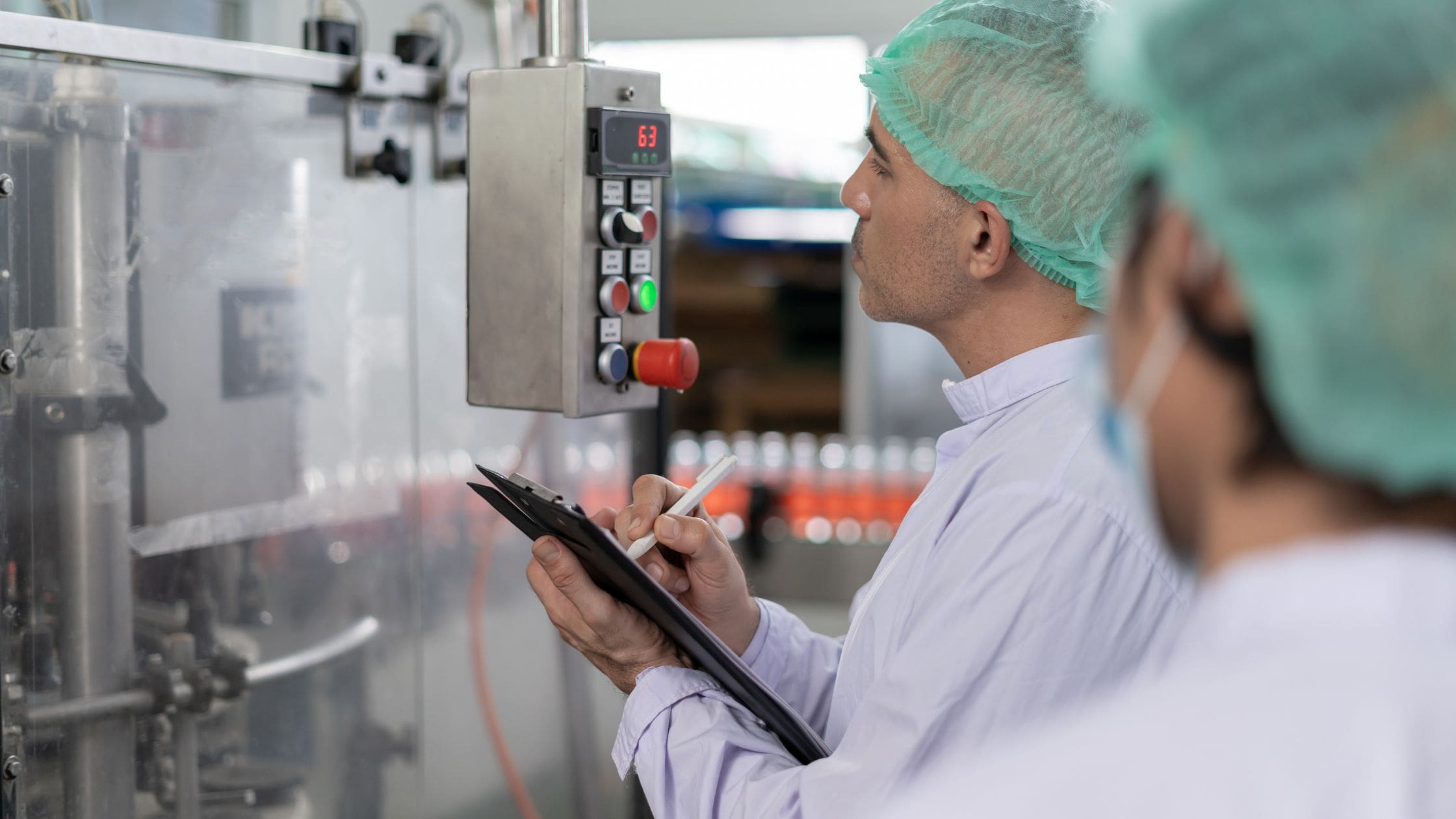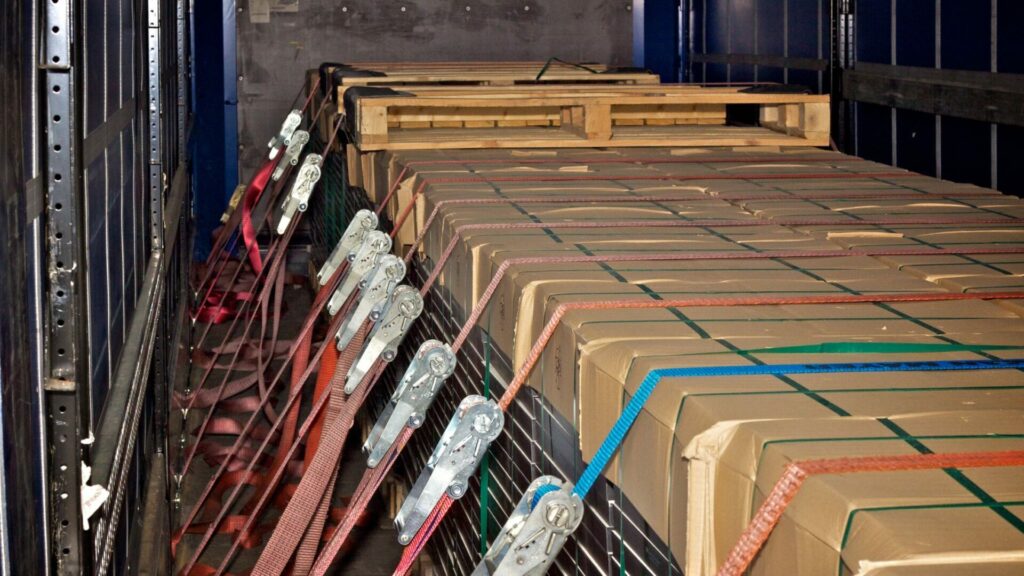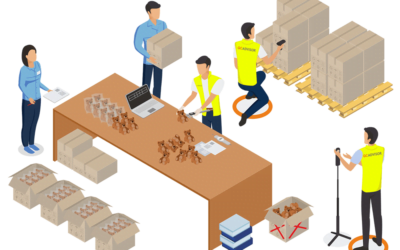Before releasing any product to the market, ensuring its quality is essential to avoid costly recalls, and this is where product inspection comes in. It’s not uncommon for products to be recalled months or even years after they’ve been sold, often due to insufficient inspections before launch. In the supply chain, product inspection is a key step in maintaining quality control. If you’re new to manufacturing, this article will guide you through the importance of thorough product inspections and the steps you can take to ensure your products meet the highest standards.
What is a Product Inspection?
Product inspection refers to the process of examining goods during or after production to ensure that they meet predefined quality standards. It typically involves assessing product specifications, visual inspection for defects, and conducting performance tests to ensure the product functions as intended.
Product inspections are carried out by trained inspectors who check everything from raw materials to final packaging. This process is critical in industries that rely on mass production and strict quality control to avoid non-conformities and ensure customer satisfaction.
What are the Objectives of Product Inspection?
The primary objectives of product inspection are to ensure product quality, minimize defects, and confirm compliance with quality standards. The first objective is to verify that the product meets the established product specifications, ensuring that the materials, components, and design align with the required standards. Second, inspections help identify defects during the production process, allowing for corrections before the products are shipped. Third, product inspections provide a layer of quality control to prevent customer complaints and product recalls, safeguarding the company’s reputation. By fulfilling these objectives, businesses can consistently deliver high-quality products that meet both consumer expectations and industry requirements.
What is the Product Inspection Process?
The product inspection process involves several critical steps that assess the overall quality of products at various stages of manufacturing. This process is essential for identifying potential issues and maintaining consistent quality throughout production.
- Production Status Evaluation: The inspection begins with evaluating the current production status. Inspectors check if the manufacturing process is on schedule or delayed, track completed and incomplete units, and document these findings for the company’s reference.
- Random Product Sampling: A sample of products is randomly selected from the production line or warehouse. The sample size is determined based on the product’s importance, the potential defect rate, and the required confidence level for the inspection.
- Design and Quality Specifications Review: The inspector reviews the product’s design and quality specifications to ensure compliance with industry standards and company requirements. This step includes checking specifications, quality standards, and inspection checklists to ensure that the product aligns with the intended design.
- Visual Inspection of Product and Packaging: Inspectors perform a visual examination to detect any defects such as cracks, scratches, or missing components. The packaging is also inspected to ensure it is intact, free from damage, and properly labeled with relevant information.
- Physical Testing and Defect Review: Functional tests are conducted to confirm that the product operates as intended. This may involve testing for performance, durability, and safety. Any defects found during testing are documented for further review.
- Specialized Tests: Depending on the product, additional tests may be required. These could include chemical analysis, electrical testing, or microbiological assessments, ensuring that the product meets specific safety and quality standards.
- Documentation and Reporting: All findings, including any defects or non-conformities, are recorded in detailed reports or checklists. This documentation serves as a reference for the company and assists in determining corrective actions if necessary.
- Decision Making: Based on the inspection results, a decision is made about whether the products meet the required quality standards. If defects are found, corrective measures are implemented before the products can be approved for distribution.
What are the Different Types of Product Inspections?
There are several types of product inspections, each designed to assess product quality at various stages of the manufacturing process. These include pre-production, in-production, pre-shipment, and post-production inspections.
Each inspection type focuses on different aspects of the product and the production process, allowing manufacturers to catch defects early, ensure compliance with quality standards, and avoid costly mistakes later in the supply chain.
Pre-Production Inspection
A pre-production inspection is carried out on-site either before manufacturing begins or after approximately 20% of the production is completed. This inspection primarily focuses on evaluating the raw materials and machinery to ensure they meet the necessary quality standards.
The goal is to confirm that the supplier is using the correct materials and equipment, and that the production process is set up to meet the required specifications. During this inspection, inspectors will verify that the components and materials used align with the order requirements and that the manufacturing process is on track to meet quality and delivery expectations. Conducting a thorough pre-production inspection helps prevent major defects and ensures that the final product will meet quality standards from the outset.
In-Production / During Production Inspection
An in-production inspection, also known as a during production inspection, takes place when 40-60% of the manufacturing process is complete. This inspection allows for an early evaluation of the production process, ensuring that any potential defects or quality issues are addressed before full production is completed. Inspectors assess the product’s materials, components, and assembly, while also conducting random sampling of products from the production line.
This is a crucial step for identifying issues such as misaligned parts or faulty materials, which can be corrected before the majority of the products are completed. This process helps maintain consistency in the product’s quality and reduces the risk of larger issues arising later in the production cycle.
Pre-Shipment Inspection
A pre-shipment inspection is performed when at least 80% of the products are packed and ready for shipment. This inspection is the final quality check before the goods leave the warehouse or factory. It involves a thorough visual inspection of the products, packaging, and labeling to ensure they meet the required standards. Inspectors also conduct functional tests to verify that the products perform as expected and are free of defects.
The goal of the pre-shipment inspection is to catch any issues that may have been overlooked during earlier stages of production. By ensuring that the products are in good condition before they are shipped, companies can avoid customer complaints, product recalls, and shipping delays, ensuring a smooth delivery process.
Container Loading Control Inspection
A container loading control inspection is a crucial step carried out during the loading of products at the factory or warehouse. The goal of this inspection is to verify that the correct products, in the right quantities, are loaded into the shipping container.
The inspector ensures that each product meets the necessary quality standards and is properly packed to prevent damage during transport. In addition to checking the products, the inspector examines the condition of the container itself, ensuring it is clean, secure, and suitable for transporting goods.
This inspection step is essential for minimizing shipping delays and avoiding product damage that could occur from improper loading or poor container conditions. Ensuring these safeguards helps businesses maintain product integrity during the often complex shipping process.
Piece-by-Piece Inspection (Full Inspection)
The piece-by-piece inspection method involves inspecting each item individually for defects and quality assurance. This inspection is usually employed for products that require the highest standards of quality, such as luxury goods, electronics, or high-end consumer items. Inspectors check each piece for any imperfections, including visual defects, functional issues, or discrepancies from the product specifications.
By examining every product thoroughly, businesses can guarantee that only defect-free products reach their customers. This method is more time-consuming than other inspection types but is highly effective for ensuring maximum quality control, particularly when any faulty product could result in a significant loss of brand reputation or customer satisfaction.
Production Monitoring
Production monitoring takes place during the manufacturing process, usually before the products are fully packed. This type of inspection helps identify quality issues early on, enabling manufacturers to make timely adjustments and corrections. The monitoring focuses on maintaining high product standards throughout the production stages, from the sourcing of raw materials to assembly.
Inspectors closely evaluate the quality control procedures and ensure that production follows the agreed specifications. By conducting these checks early in the process, businesses can reduce the risk of defects in mass production, avoid customer complaints, and prevent costly product recalls later on. Through this monitoring, you can catch any deviations from the product specifications and adjust before it becomes a bigger issue.
What are Product Inspection Standards and Compliance?
Product inspection standards ensure that all goods meet quality, safety, and performance requirements before reaching consumers. These standards are set by international organizations, industry bodies, and local regulations to maintain consistency and safety across different markets.
- International Standards for Product Inspection:
Two key sets of standards govern global product inspections: ISO standards. The ANSI/ASQC Z1.4 standard, often referred to as AQL (Acceptable Quality Limit), defines sampling procedures to determine if a product batch meets quality levels. This system helps ensure that only a minimal percentage of defects are allowed in any given batch, making it an essential tool in the product inspection process. - Compliance with Local and Regional Laws:
Every market has its own regulations that must be adhered to. For example, products sold in the European Union must meet CE marking requirements for safety and environmental protection. In the United States, agencies like the FDA or the Consumer Product Safety Commission (CPSC) set standards that products must meet to ensure compliance. Failure to meet these standards can result in penalties, recalls, or even bans on product sales, severely affecting business operations and reputation.
What Does a Typical Product Inspection Checklist Look Like?
A comprehensive product inspection checklist is vital for ensuring product quality meets all required standards before it reaches consumers. The checklist covers various aspects of the product, from appearance to functionality, and ensures consistency across production batches.
- Workmanship and Acceptable Quality Limits (AQL): This evaluates the craftsmanship and assembly of products. AQL defines the limits for defects, allowing inspectors to determine if the batch meets the acceptable quality level.
- Functionality and Performance: Here, the product’s functionality is tested, ensuring buttons, switches, or other mechanical parts operate as designed. This step ensures the product performs as expected.
- Dimensions and Measurements: The physical dimensions of the product are checked to make sure they meet the specific requirements. Any variance from design specifications can cause functional or aesthetic issues.
- Packaging and Labeling: This step ensures the packaging is suitable and intact, with accurate labeling including usage instructions, warnings, and barcodes.
- Documentation and Certifications: Inspectors verify the accuracy and presence of documentation and certifications, confirming compliance with regulations and standards.
- Quantity Verification: Ensures the actual quantity of products matches what was ordered. Verifying this helps prevent shortages or excess.
- Visual Aesthetics: The product’s appearance is reviewed, ensuring the design, colors, and patterns align with specifications.
- Visual Inspection: A general check for visible defects, including scratches, cracks, or inconsistencies in the product finish.
- Labeling and Packaging Integrity: Ensures labels are correctly placed, legible, and that packaging is intact and provides the necessary protection during shipping.
- Barcode Validation: Barcodes are checked for accuracy and scannability, ensuring they function as intended in logistical processes.
- Functionality Testing: Specific functions are tested, such as buttons or motors, to verify they work as required.
- Special Product Testing: Depending on the product type, specialized tests may be conducted, such as electrical or durability testing.
- Physical Attributes: Inspects the weight, material, and texture, ensuring the product feels and looks as intended.
- Carton Drop Tests: These tests ensure that packaging can withstand normal shipping conditions, reducing the risk of product damage.
- Dimension Check: Rechecks the physical dimensions to ensure consistency across all units.
- Performance Check: Ensures the product’s overall performance aligns with what is expected, focusing on its key functions.
- Destructive and Non-Destructive Testing: These tests are performed to evaluate the product’s durability, whether through use or exposure to external stresses.
- Inspection Equipment and Tools: Ensures that the correct tools are used to inspect the products, contributing to accurate and reliable inspection results.
What Are the Benefits of Production Inspection?
Regular product inspections during production provide essential benefits that help improve product quality, reduce costs, and optimize supply chain processes. These inspections ensure that products meet quality standards before they reach the market, leading to fewer defects and greater customer satisfaction. Below are the main benefits of conducting production inspections:
- Reduced Return Rates: Early detection of defects helps prevent faulty products from reaching customers, reducing the cost of returns and reworks.
- Increased Customer Loyalty: Consistently delivering high-quality products encourages repeat purchases and boosts brand loyalty.
- Improved Inventory Management: Inspections help track stock levels, identify defective items, and ensure efficient use of warehouse space.
- Streamlined Supply Chain: By catching production inefficiencies early, inspections help reduce bottlenecks, speeding up delivery times and enhancing operational efficiency.
- Superior Product Quality: Inspections ensure that products meet or exceed required quality standards, boosting the overall performance and reliability of the product.
- Cost Savings: Identifying and correcting issues early in the production process saves time and money, avoiding expensive post-production fixes.
- Fewer Customer Complaints: Ensuring product quality during production leads to fewer negative reviews and complaints, improving your brand’s reputation.
- Enhanced Compliance: Regular inspections ensure that products meet legal and safety requirements, reducing the risk of non-compliance penalties.
How Should an Inspector Prepare for a Product Inspection?
Preparation is key for a successful product inspection, ensuring that the process runs smoothly and yields accurate results. Here are essential steps an inspector should take to prepare:
First, the inspector should obtain a golden sample from the supplier. This sample is critical because it serves as the benchmark for quality and performance standards. The approved sample allows the inspector to compare the final products against a pre-set standard to ensure consistency and compliance.
Next, the inspector should create a detailed quality control (QC) checklist. This checklist outlines all the specifications, including design and quality requirements, that the product must meet. It is essential to set clear criteria for the inspection process, which can include visual inspection, performance testing, and verifying packaging.
Finally, scheduling the inspection at a time that aligns with the manufacturer’s production cycle is crucial. By coordinating ahead of time, the inspector ensures their visit doesn’t disrupt production while still allowing for thorough testing and quality verification.
How Often Should Product Inspections Be Conducted?
Product inspections should typically be conducted for every new year. For someone, a common timeline is every 30 to 90 days, depending on the complexity of the products and the manufacturing process. Early initial production checks help catch issues with raw materials or product specifications before large-scale manufacturing begins.
Mid-production quality inspections ensure that the product quality meets industry standards, allowing time for adjustments before the mass production stage.
Finally, a pre-shipment inspection ensures that finished products are compliant with quality standards and free of defects before they are shipped. Conducting inspections at regular intervals improves product quality, reduces the risk of product recalls, and helps maintain customer satisfaction.
What Are the Consequences of Poor Product Inspection?
The main consequences of poor product inspection include increased product recalls, higher return rates, and damage to your brand reputation. Products with quality issues can lead to customer complaints, impacting customer satisfaction and trust.
Poor inspection practices can also result in non-compliance with quality standards, leading to potential legal consequences or penalties. Additionally, defective products can disrupt the supply chain, causing delays in shipments and impacting business operations. Effective inspection services and quality control are essential to avoid these costly and damaging outcomes.
How Do You Choose the Right Product Inspection for Your Business?
Choosing the right product inspection for your business depends on several factors, including the risk level of your products, the manufacturer’s reputation, and cost considerations.
- Level of Risk: If you are dealing with low-risk products like non-sensitive consumer goods, a less frequent or simplified inspection process may suffice, focusing mainly on pre-shipment inspection. For medium-risk products, such as electronics or items with specific functional components, you may need more rigorous checks like production monitoring or product testing during mass production. High-risk products, such as medical devices, require the most detailed product quality inspections, including pre-shipment inspection and ongoing quality control inspections at multiple stages.
- Manufacturer’s Reputation and Performance: Consider your supplier’s history of quality inspections and consistency. If a manufacturer has a strong record of maintaining quality standards, you might not need as frequent inspections. However, for new suppliers, regular product inspections are crucial to ensuring product quality meets your standards.
- Cost of Inspections: The cost of product inspections varies depending on the inspection type and frequency. Balance the need for comprehensive quality control with the budget available, ensuring that quality issues are minimized without overspending.
What Are Some Common Mistakes Companies Make During the Product Inspection Process?
Companies can often make several critical mistakes during the product inspection process, leading to quality issues and costly errors.
One common issue is the failure to establish clear quality standards before inspections begin. Without predefined benchmarks, inspectors may have varying interpretations of what constitutes acceptable product quality. Additionally, companies may rely solely on visual inspections, overlooking the need for more thorough product testing.
While visual inspections are useful, they do not always reveal defects in functionality or performance.
Another mistake is conducting product inspections too late in the production process. Waiting until pre-shipment inspections increases the risk of discovering major issues after significant resources have already been invested. One more production inspection mistake is not having approved samples.
Lastly, inadequate communication between the quality control team and the supplier can lead to misunderstandings about product specifications, which could result in inconsistent production outcomes. By addressing these common mistakes, businesses can ensure that their product inspections are more effective and reliable.
How Are Production Inspection Results Provided?
Production inspection results are usually delivered through detailed reports, which offer a comprehensive analysis of the inspection findings. These reports typically include a breakdown of the visual inspection, functionality tests, product specifications, and any non-conformities found. The inspection checklist serves as a reference to ensure all aspects of the product, from raw materials to finished goods, are examined thoroughly.
QCadvisor product inspection services provide inspection reports on the same day the inspection is completed. This prompt delivery allows businesses to take immediate action if any quality issues or non-compliances are discovered, reducing potential delays in the production or shipment process. By receiving inspection results quickly, companies can make necessary adjustments to their supply chain, ensuring product quality remains consistent and aligned with industry standards.
What is the Difference Between Product Inspection and Product Testing?
Product inspection and product testing are both critical components of quality control, but they serve distinct purposes within the production process.
- Purpose: Product inspection focuses on identifying defects or inconsistencies in the final product by examining its compliance with pre-established quality standards. It is a visual and functional review meant to catch non-conformities before products reach the consumer. On the other hand, product testing is a more in-depth evaluation of the product’s performance, safety, and functionality, often conducted under controlled conditions in a laboratory. Testing ensures that the product meets industry regulations and safety requirements.
- Setting: Inspections typically occur on the manufacturing floor, often during different stages of production, like pre-shipment or during an initial production check. Testing, however, takes place in a specialized setting where the product undergoes rigorous assessments for durability, safety, and performance.
- Process: Inspection involves sampling a batch of products to ensure consistency, while testing includes detailed experiments or stress tests on individual units to validate product performance. For instance, while product inspection may identify a surface defect during a visual inspection, product testing might determine whether the product can withstand certain environmental conditions.
How Much Does a Product Inspection Audit Cost?
The cost of a product inspection audit typically ranges from $300 to $500 USD per Man-day. This fee can vary based on several factors. First, the location of the inspection plays a role—audits conducted in more remote or international locations may require higher travel costs. Second, the complexity and type of products being inspected can affect the price. For instance, intricate products requiring specialized tools or testing will likely increase the cost. The scope of the inspection, such as whether it’s for pre-shipment or during initial production, also influences the pricing. Lastly, the number of inspectors needed and the audit duration are important factors, as longer or more detailed inspections will raise the overall expense.
What is the Difference between Product Inspection and Process Control?
Product inspection focuses on evaluating the final products to ensure they meet quality standards. It involves visual checks, functionality tests, and verifying compliance with specifications. In contrast, process control monitors the manufacturing process itself. The goal of process control is to maintain consistent quality throughout production by managing variables like temperature, equipment settings, or raw materials. While product inspection happens after production, process control is ongoing during the manufacturing stages, ensuring smoother operations and minimizing defects from the start. Both are essential but address different aspects of maintaining product quality.
Conclusion
Regular product inspections are key to avoiding costly mistakes, whether during production or before shipment, by catching potential issues early. By now, you should have a clear understanding of what product inspection involves and how it protects your brand’s reputation while ensuring customer satisfaction. Committing to a thorough inspection process is always a smart investment, and for reliable, tailored solutions, QCadvisor offers services designed to meet your diverse needs.
Frequently Asked Questions
1. Can You Skip the Product Inspection?
It’s not recommended to skip a product inspection, especially if you want to maintain product quality and meet quality standards. Skipping this step could lead to defective products reaching your customers, increasing the risk of returns or customer complaints. By conducting inspections, you reduce the likelihood of non-conformities and maintain a strong reputation for quality control. Inspections ensure that the supplier adheres to your specified product specifications and keeps the production process on track.
2. What is the Best Way to Communicate Product Inspection Standards to a New Supplier?
Clearly outline your product inspection standards in a detailed inspection checklist. Include specific product quality expectations, required quality standards, and the product inspection process you expect them to follow. It’s helpful to also provide a product sample or initial production check to ensure they understand your quality control requirements. Regular communication and offering inspection reports or checklists can also reinforce these standards, ensuring that the supplier is aligned with your expectations throughout the production process.









